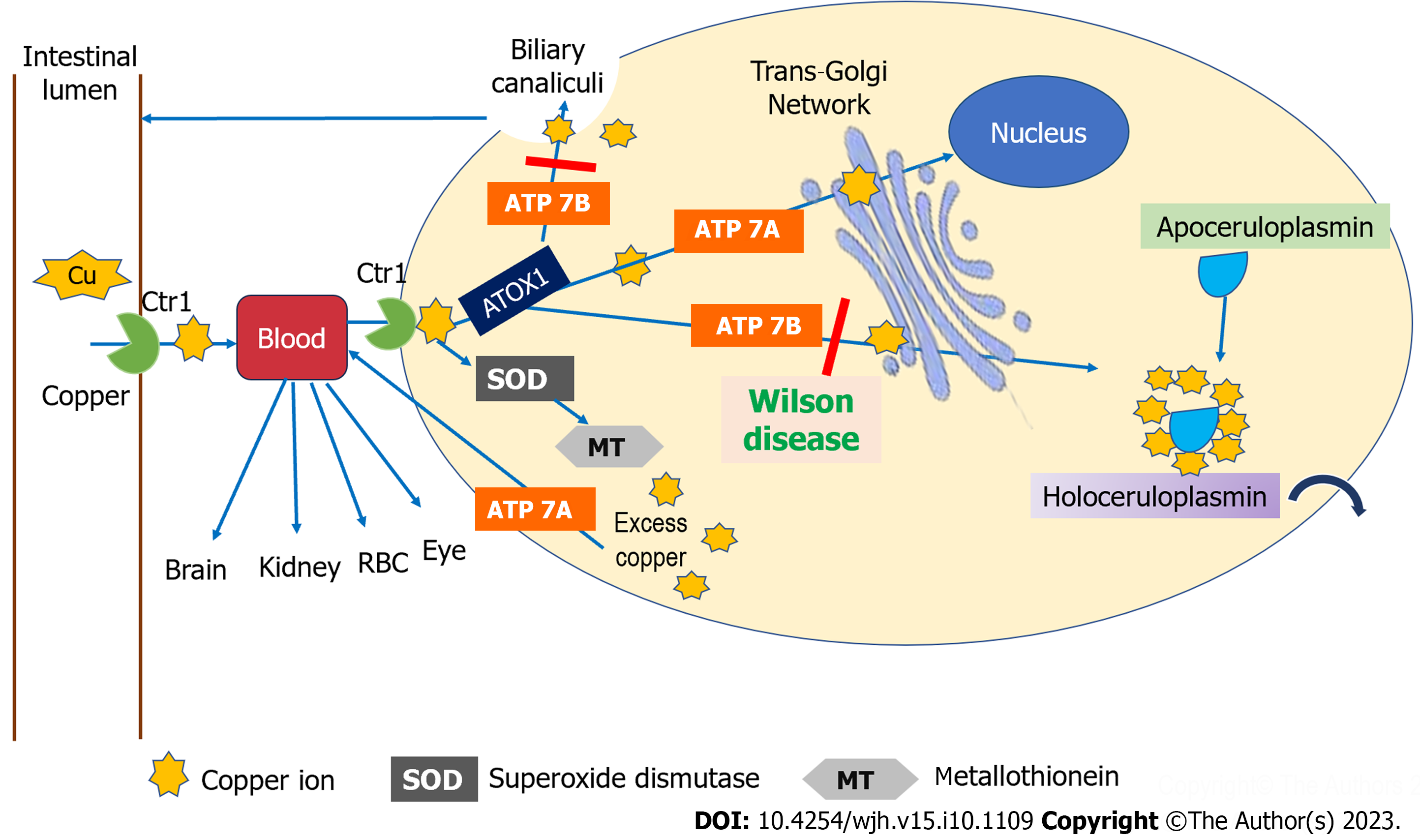Copyright
©The Author(s) 2023.
World J Hepatol. Oct 27, 2023; 15(10): 1109-1126
Published online Oct 27, 2023. doi: 10.4254/wjh.v15.i10.1109
Published online Oct 27, 2023. doi: 10.4254/wjh.v15.i10.1109
Figure 1 Dietary copper (Cu) is taken up in the small intestine by intestinal enterocytes by copper transport receptor 1 (Ctr1) on the apical site.
Most of the newly absorbed copper is taken up by the liver, mediated primarily by Ctr1. Accumulated copper is sequestered by superoxide dismutase and stored in metallothioneins. Specialized chaperons shuttle copper to its specific cellular targets: Antioxidant protein 1 (Atox1) to the copper-transporting ATPases ATP7A and ATP7B. Both ATP7A and ATP7B transport copper into the trans-Golgi network for subsequent incorporation into copper-dependent enzymes. ATP7B provides copper for incorporation into ceruloplasmin as well as for biliary excretion of copper, whereas ATP7A has role in copper mobilization from hepatic stores into the bloodstream during peripheral copper deficiency. Mutation in ATP7B gene leads to impaired biliary excretion of copper, causing copper overload in liver and other tissues as well as failure of loading of ceruloplasmin with copper. MT: Metallothioneins.
- Citation: Ghosh U, Sen Sarma M, Samanta A. Challenges and dilemmas in pediatric hepatic Wilson’s disease. World J Hepatol 2023; 15(10): 1109-1126
- URL: https://www.wjgnet.com/1948-5182/full/v15/i10/1109.htm
- DOI: https://dx.doi.org/10.4254/wjh.v15.i10.1109













